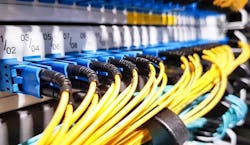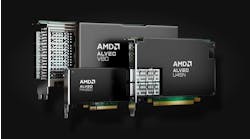Three Consideration for Planning Your Data Center Design
The event featured Director of Data Center Sales Chrissy Olsen, Technology Solutions Architect Henry Franc, StrategITcom CTO Carrie Goetz, Black Box Network Services Project Manager Chris Hillyer and myself.
As part of this discussion, we had a friendly debate about Middle of Row (MoR) vs. End of Row (EoR) data center design when it comes to building fiber redundancy into the data center. The question at hand: How do you choose a layout? What’s the best layout?
While everyone had their favorite, we all agreed on one thing: It comes down to preference. Some data center managers love MoR because it supports a symmetrical layout and reduces inconsistencies and variances. Others prefer EoR because it requires less rack space. But there’s no right or wrong answer here—as long as you keep certain factors in mind.
For a recap of some of the most important considerations to keep in mind when selecting a data center layout, read on …
1. Don’t Create Unnecessary Complexity
We once worked with a client that decided to do an EoR design and set up rows of cabinets from left to right—and then right to left—switching back and forth to maximize square footage. While that may be true, this approach also created a new challenge: a large increase in physical complexity.
The lesson here? Before you decide on a data center layout, consider the purpose of your redundancy: What are you trying to protect your data center from? If this client was concerned about a backhoe driving through their data center, then this layout may have been a good fit. In the end, however, their goals were more about reducing operational redundancy to ensure uninterrupted uptime. In that case, there are simpler ways to achieve those results.
Another example of weighing complexity involves using color codes as part of a redundancy strategy. While color codes create a way for data center operators to visually see the redundancy built into the system (blue cables on one side and orange cables on the other, for example), color codes can also bring another level of complexity to the data center design when they’re not followed.
If a data center technician needs a blue cable to make a repair and can’t find one, then it’s likely he’ll use an orange cable instead—and the color code can lose its value from there. Are the benefits worth the level of complexity they bring?
2. Maintain Consistency & Standardization When You Can
As much as possible, be consistent within one area, one data center and potentially across all data center facilities. Doing so comes with many benefits.
A standardized environment allows operations to be more efficient at a lower overall cost. Even something as simple as racks and cabinets that assemble using the same process will save time.
Human error is the cause of the majority of data center downtime—and reducing it offers the largest opportunity to improve availability. Standardizing data center processes and systems helps technicians become familiar with documentation, maintenance and repairs, resulting in fewer mistakes due to lack of knowledge or awareness.
Data center standardization also requires less time to bring systems back online. When standardized components can be removed and quickly replaced during failure, business disruption is kept to a minimum. When technicians know how to resolve an issue in one area of the data center, they’ll be able to apply that knowledge to the entire facility (or facility portfolio) when layouts and solutions are standardized.
3. Leave Enough Room for Pathways and Spaces
Pathways and spaces are some of the most ignored aspects of a data center—until they’re full. Then they get some much-needed attention. Proper cable management isn’t an option—it’s a necessity. And it should be planned ahead of time.
Whether they’re underfloor or overhead, pathways need enough space for containment systems to be installed, whether those are ladder racks, trays, baskets, etc. Key parameters for containment systems include rack density, end equipment cable entry, room height and cable type, count and diameter. They all factor into planning.
Make sure the data center layout you choose provides enough room for cable management now—and in the future.
Shad Sechrist, Data Center Pre-Sales Solutions Engineer at Belden. He has more than 20 years of experience in the electrical and electronic manufacturing industry, including data center design, building infrastructure consulting and network design. Belden designs, manufactures and markets a comprehensive portfolio of networking, security and connectivity technologies and products across a variety of industrial, enterprise and professional broadcast markets. To hear more insights on the topic of fiber in data centers, listen to the entire LinkedIn Live session here





